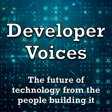
Testing TVs At Scale With Elixir (with Dave Lucia)
Integration testing is always a tricky thing, fraught with problems setting up the right environment and attempting to control the system’s state. That’s particularly true when you’re dealing with a mix of software and hardware, and even worse when you don’t have control of what the hardware can do.
This week I’m joined by Dave Lucia of TVLab’s, who’s building systems for testing television software at scale, and it’s a problem that needs a huge variety of techniques to crack it. He’s using cameras, real time video processing, Erlang & Elixir and a host of other tools to make it possible to test a fleet of televisions on demand.
Sometimes good systems revolve around a single big idea; this time it’s a large combination of solutions, coordinated by the BEAM, that gets the job done.
--
TVLabs: https://tvlabs.ai/
Flipper Zero: https://flipperzero.one
ATSC 3.0 “NextGen TV”: https://en.wikipedia.org/wiki/ATSC_3.0
Support Developer Voices on Patreon: https://patreon.com/DeveloperVoices
Support Developer Voices on YouTube: https://www.youtube.com/@developervoices/join
Kris on Bluesky: https://bsky.app/profile/krisajenkins.bsky.social
Kris on Mastodon: http://mastodon.social/@krisajenkins
Kris on LinkedIn: https://www.linkedin.com/in/krisjenkins/
